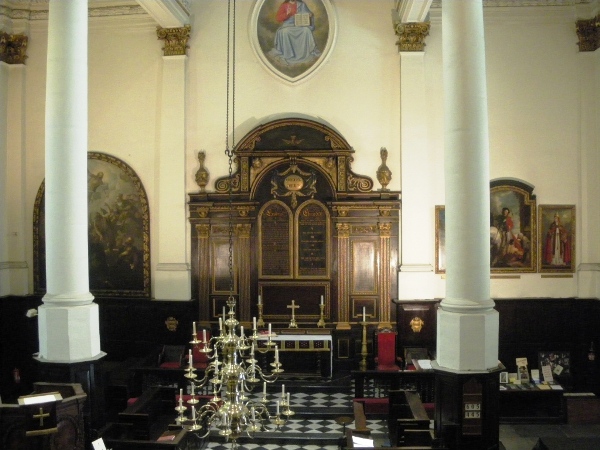
I’ve mentioned this before on this site, but the history you can uncover with even a minimal effort on a walk through London never ceases to surprise me. Take last week for example…
We popped into the church of St Martins Within Ludgate, just down from St Paul’s Cathedral, to admire one of the few surviving churches built by Sir Christopher Wren. Most of Wren’s masterpieces had been destroyed during WW2 and a great many on a single night in December 1940, when the Luftwaffe launched a ferocious attack on the City of London with the objective of destroying St Paul’s Cathedral. St Paul’s came within a whisker of destruction and St Martin’s was spared too, thanks only to a favourable wind that kept the surrounding flames at bay.
While St Martin’s saw its share of London’s high and mighty come to worship over the centuries, two names stand out. William Penn, whose son would later be the founder of the American state of Pennsylvania, was married here in 1643. Sometime before this, probably in 1616, an American Indian lady by the name of Pocahontas paid a visit with her husband John Rolfe. Pocahontas, known then by her Christian name Rebecca, was apparently seen by London society as a curiosity and living proof that savages could indeed be tamed.
The animated film Pocahontas depicts her love affair with Captain John Smith, the then governor of Virginia. Although he met her several times on both sides of the Atlantic, there is no evidence to suggest they had any sort of physical relationship. Even so, their stories overlap perfectly here in the City of London, with Captain Smith buried in the church of St Sepulchre Without Newgate, barely 100 metres away.
Old London was a crowded place and a stone’s throw often separated the sacred from the profane. Next to St Sepulchre’s Without Newgate is the Viaduct Tavern. The pub has its own colourful history as a Victorian gin palace and brothel opposite the notorious Newgate Prison. The gallows on which many prisoners were hanged in public were just outside the window. But it’s what’s in the cellar of the Viaduct that has provoked much debate.
When you visit the Viaduct, ask to be shown to the cellars – if the bar isn’t too busy the staff will usually oblige. Below there are five caged compartments – said to be cells used as an overflow for Newgate Prison, or in another version of events, by the remand gaol the Giltspur Street Compter. There’s even a hole above the cells which the bar staff will tell you may have been used as a feeding tube. The stories are debunked as impossible myths here and I have to admit that while enjoying the history lesson in the basement of the Viaduct, I did find it hard to imagine that this would indeed be the set-up of a prison.
And just to bring the story back to 21st century relevance, the road linking St Martin’s with the Viaduct Tavern is Old Bailey and it’s here that the UK’s most high-profile criminal cases are heard. Don’t be surprised to find crowds of journalists, protesters and even the occasionally errant celebrity as you wander past the entrance to the court – proof that London’s history is an ever-evolving story.




